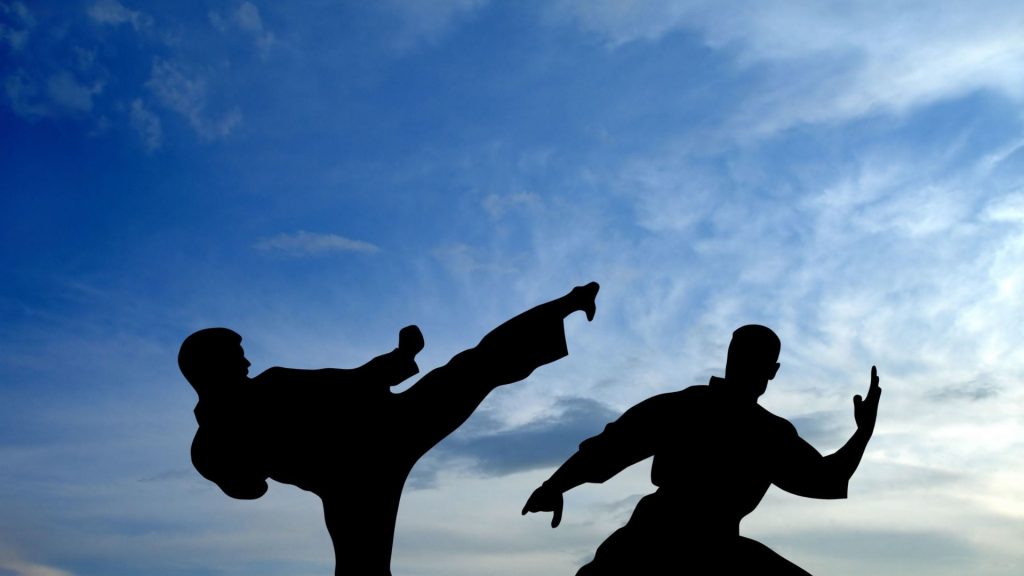
Kung Fu, a term that resonates with martial arts enthusiasts worldwide, is not just a form of combat but a journey of discipline, perseverance, and spiritual growth. Rooted deeply in Chinese history and culture, Kung Fu has evolved over centuries, branching out into various styles, each with its unique techniques and philosophies. This article delves into the intricate tapestry of Kung Fu, tracing its origins from the revered Shaolin Monastery to the fluid combat style of Wing Chun.
The Roots of Kung Fu: Shaolin Monastery
The Shaolin Monastery, often considered the birthplace of Kung Fu, has a rich history intertwined with Chinese martial arts.
The Shaolin Monastery, located in Henan province, is renowned for its association with Chinese martial arts. Historically, the monks of Shaolin practiced martial arts not just for self-defense but also as a form of physical exercise and spiritual cultivation.
The term “Kung Fu” itself, while commonly associated with martial arts, actually refers to any skill achieved through hard work and practice. In the context of martial arts, it denotes expertise in combat techniques.
Shaolin Kung Fu incorporates a wide range of techniques, including punches, kicks, locks, and throws. It also emphasizes the importance of mental strength and meditation.
The Shaolin Monastery has played a pivotal role in the evolution of Kung Fu, laying the foundation for many martial arts styles that followed. Its teachings emphasize both physical prowess and spiritual growth.
Wing Chun: The Graceful Combat
Wing Chun, another prominent style of Kung Fu, is known for its efficiency and fluidity. Originating in southern China, Wing Chun is a close-combat system that emphasizes quick movements and efficient use of energy. Unlike some martial arts that rely on brute strength, Wing Chun focuses on technique and leverage.
One of the hallmarks of Wing Chun is the “centerline” principle, where practitioners aim to control and attack an opponent’s centerline while protecting their own.
The wooden dummy, a training tool unique to Wing Chun, helps practitioners refine their techniques and improve their understanding of angles and force.
Wing Chun stands out for its practicality and efficiency in combat situations. Its principles, such as the centerline theory, make it a unique and effective martial art.
The Pillars of Kung Fu: Fundamental Principles and Techniques
Beyond the various styles and techniques, Kung Fu is anchored on foundational principles that guide its practice. These principles not only dictate the physical movements but also the mental and spiritual aspects of the martial art. This section will shed light on some of these core tenets and techniques that are integral to Kung Fu.
Table: Fundamental Principles and Techniques of Kung Fu
| Principle/Technique | Description |
|---|---|
| Qi (Chi) | Refers to the life force or energy flow within the body. In Kung Fu, harnessing and directing one’s Qi is crucial for executing techniques effectively. |
| Stance Work | The foundation of all movements. Proper stances ensure stability, power, and fluidity in techniques. Examples include the horse stance and cat stance. |
| Breathing | Proper breathing techniques enhance stamina and power. It’s also intertwined with the concept of Qi, aiding in its circulation. |
| Forms (Kata) | Choreographed sequences of movements that help practitioners internalize techniques and principles. They are both a training tool and a demonstration of skill. |
| Application | The practical use of techniques learned in forms. This involves understanding the real-world usage of movements, be it for defense or attack. |
The essence of Kung Fu transcends mere physical combat. It’s a harmonious blend of mind, body, and spirit, all anchored on foundational principles and techniques. From understanding one’s Qi to mastering intricate forms, these pillars ensure that practitioners move with purpose, power, and precision.
Diverse Styles of Kung Fu: Beyond Shaolin and Wing Chun
While Shaolin and Wing Chun are among the most recognized, Kung Fu boasts a myriad of styles, each with its own philosophy and techniques. This section provides a glimpse into the diversity of Kung Fu.
List of Some Prominent Kung Fu Styles:
- Tai Chi: A martial art known for its slow, flowing movements and emphasis on balance and harmony.
- Baguazhang: Recognized for its circular walking patterns and spinning techniques.
- Hung Gar: A style that mimics the movements of animals like the tiger and crane.
- Praying Mantis: A style that imitates the quick and precise strikes of the mantis.
Each style of Kung Fu has its own unique techniques, training methods, and philosophies. For instance, while Tai Chi is often practiced for health and relaxation, styles like Hung Gar are more combat-oriented.
The world of Kung Fu is vast and diverse, with each style offering a unique approach to martial arts. Whether for self-defense, physical fitness, or spiritual growth, there’s a style of Kung Fu suited for every individual.
So, Kung Fu, with its rich history and diverse styles, remains a testament to the human spirit’s quest for mastery, discipline, and self-improvement. From the serene halls of the Shaolin Monastery to the bustling streets where Wing Chun was honed, Kung Fu has left an indelible mark on martial arts and global culture. As we reflect on its journey, we are reminded of the dedication, perseverance, and passion that define this ancient art form. Whether one seeks physical prowess, mental fortitude, or spiritual enlightenment, Kung Fu continues to inspire and guide countless individuals on their path to self-discovery.